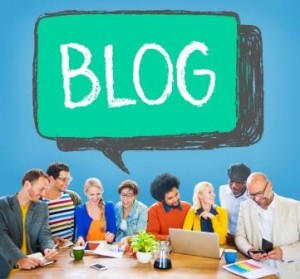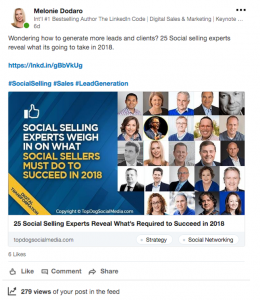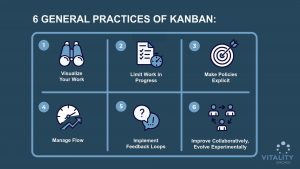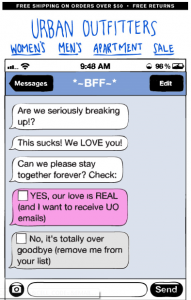Learn how four big brands use generative AI to streamline marketing, from creative ideation and copywriting to data analysis and advertising.

Now that the novelty of AI has settled and marketing teams are using it across their operations in creative, efficient ways, we’re starting to see some interesting case studies emerge.
Brands like Mailchimp, Klarna, JPMorgan Chase and Mars are going all-in on AI and integrating it across marketing workflows — from brainstorming and content creation to analytics and optimization. They’re reaping major benefits like streamlined processes, cost savings, and the ability to flex their creativity in fun, unexpected new ways.
These brands are miles ahead in figuring out how to make AI work for them, finding unique applications tailored to their marketing needs and goals. The results have been impressive enough for marketers like me to take notes, so I’ve curated all the best findings to share with you.
Mailchimp: Accelerating creativity through AI collaboration
MailChimp integrates AI right from the brainstorming stage. For their “Clustomers” campaign, they used AI image generation tools (like DALL-E and MidJourney) to quickly create and refine visual concepts. This sped up the creative process by allowing the team to visualize ideas quickly and make real-time adjustments using the AI image tool. The ad from this campaign ranked in the top 5% of Ipsos ads, a success CMO Michelle Taite credited to the team’s openness to experimenting with AI.
“We landed on this concept in the first of our meetings,” she explained. “Usually it takes about five meetings to get alignment on a creative concept.” Taite said AI gave them the ability to “show versus tell” when ideating the concept.
AI also played a key role in personalizing the “Clustomers” messaging across global markets. Generative AI created script variations, while human expertise ensured authentic localization, like a nuanced translation of the clever name into different languages.
Perhaps most remarkably, Mailchimp advocates for building “AI fluency” amongst employees through continuous experimentation, like using image generators in brainstorms, testing predictive analytics and summarizing drafts with AI. This consistent hands-on approach empowers teams to uncover new use cases and harness AI’s potential as an “equalizer and accelerator.”
Klarna: AI-driven marketing efficiencies and cost-savings
For Klarna, the buy-now-pay-later platform, generative AI has been a powerful solution for achieving significant cost efficiencies while amplifying creative output.
A prime example: Klarna’s use of AI image generation tools like Midjourney and DALL-E to create over 1,000 images for marketing campaigns in Q1 2024 alone. This AI-driven process reduced image production costs by a staggering $ 6 million annually while accelerating creative timelines from 6 weeks to just 7 days, Klarna’s CMO David Sandstrom told Digiday last month.
On the copywriting front, Klarna’s proprietary “Copy Assistant” AI handles around 80% of marketing copy tasks, ensuring consistent brand voice and messaging at a fraction of traditional costs.
Impressively, Klarna has integrated AI “copilots” at every stage of its marketing workflow — from ideation and text generation to image creation and analytics. This systemic infusion of AI catapulted efficiencies, with the company slashing its Q1 2024 sales and marketing expenditure by 11% while increasing campaign frequency.
The company said AI integration accounted for roughly 37% of these cost savings, estimated at $ 10 million annually, highlighting the powerful impact of AI tech when strategically implemented.
JPMorgan Chase: Integrating AI with every touchpoint
As one of the world’s leading financial institutions, JPMorgan Chase has been staking its future in AI – investing billions into cloud infrastructure, research and enterprise-wide deployment initiatives. Particularly impressive is their innovative use of generative AI for marketing content.
In 2019, JPMorgan signed a five-year deal with AI firm Persado to create language models that can write high-performing marketing copy by analyzing massive datasets of tagged words and phrases. In pilot tests, Persado’s AI-generated ad copy delivered click-through rates up to 450% higher than human-written equivalents.
The company plans to leverage Persado’s AI for direct marketing in personal banking, home lending, wealth management and digital advertising, reaching millions with personalized messaging.
Kristin Lemkau, the company’s CMO at the time (now CEO), remarked on the surprising effectiveness of AI in generating creative copy that human marketers might not have imagined. Building on this success, the company plans to expand AI into internal communications, customer service prompts and beyond.
Mars: Bespoke martech to predict ad effectiveness
Loved for its candy brands like M&Ms, Snickers and Twix, Mars is also making its mark as an adopter of generative AI to elevate marketing creativity, drive efficiencies and fuel product innovation.
They developed a proprietary tool called Agile Creative Expertise (ACE) to help determine if an ad will drive sales or not.
ACE uses AI to analyze a variety of consumer data — eye tracking, facial expressions and traditional metrics — looking at over 1,000 ads from 30 Mars brands across nearly 20 markets worldwide. Then, it crunches all that data through its algorithms to predict with 85% accuracy whether a particular ad will lead to a purchase or just get skipped over.
The ACE tool has allowed Mars to become highly strategic about tweaking and optimizing campaigns for maximum emotional impact and sales potential — all within days instead of waiting months for results to trickle in. According to the company, ACE has generated over $ 30 million in optimization benefits by improving things like media targeting and impulse purchases.
Mars sees this AI ad testing approach as a major competitive advantage for driving data-driven marketing excellence. A clever way to leverage AI’s number-crunching capabilities in marketing.
More paths to new AI use cases in marketing
Brands like Mailchimp, Klarna, JPMorgan Chase and Mars are taking a noteworthy approach to using AI as a collaborative creative force, efficiency catalyst and avenue for elevated customer engagement.
There isn’t a one-size-fits-all solution for AI and marketing operations. However, a common thread here is strategically integrating it across marketing workflows to streamline operations, reduce costs, boost speed-to-market and unlock novel creative possibilities. Simultaneously, they embrace AI governance to ensure responsible adoption aligning ethics and brand values.
As generative AI continues exponential advancement, others will surely follow — and I can’t wait to see how they push boundaries and drive our collective marketing capabilities into new territories. The future is eerily intelligent — but only for the marketers and brands that embrace it on their terms.
The post How brands like Klarna and Mars are using AI in marketing operations appeared first on MarTech.
(6)
Report Post







